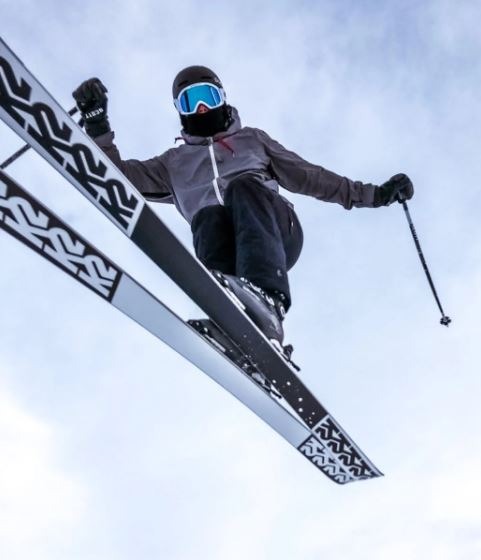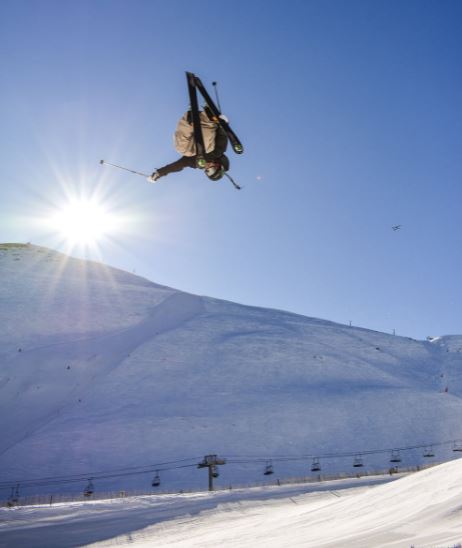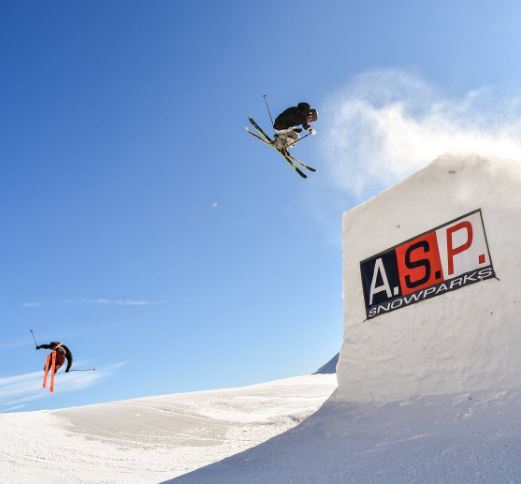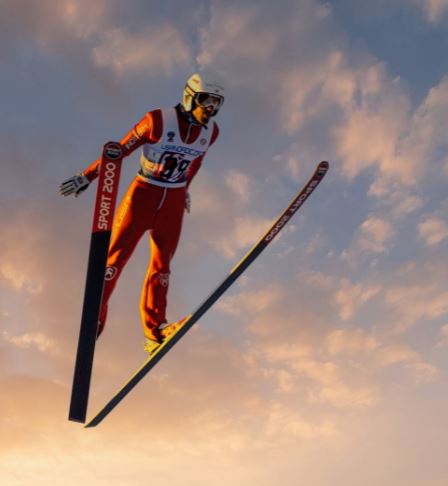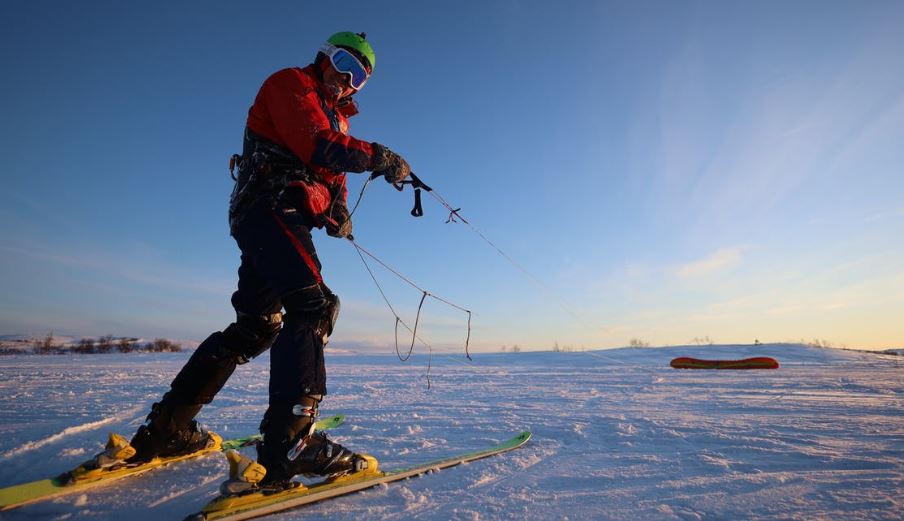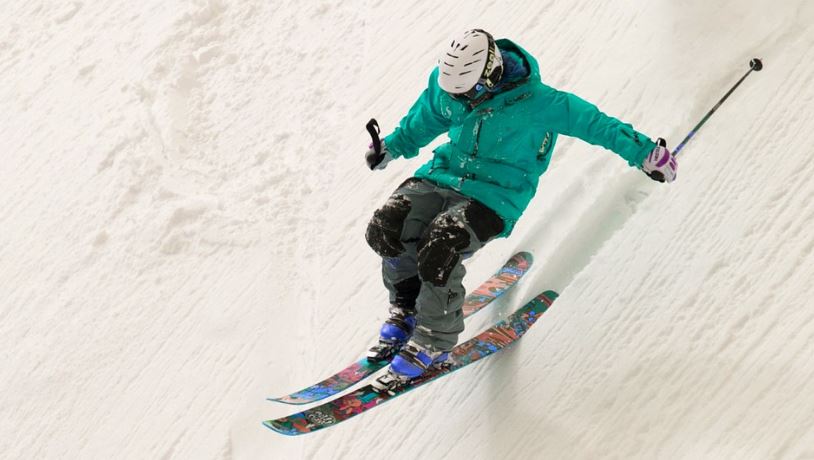Usually, the air that you breathe out is not seen by the naked eye, but when the pressure drops below 32 degrees Fahrenheit, your breath becomes a white vapor that is now visible. A sudden rise of adrenaline raises the heartbeat as you prepare to plunge at the edge of a high slope in mountainous terrain, with skis strapped to your feet and hands tightly grasping the ski poles, getting ready for a fight-or-flight reaction.
Intense and not for the faint-hearted, extreme skiing is not a sports enhancer built for ordinary people. While most of us find alpine (downhill) skiing to be harsh enough, others soon master it, become bored, and seek out something more challenging. If you are one of the brave hearts who live for the thrill, the adrenaline rush and are up for a race like a superstar Lewis Hamilton; extreme skiing is the best choice for you!
But hold your horses down! Let us know more about extreme skiing before we take the plunge into snowy mountainous terrain.
Extreme Skiing Facts
Often known as “big mountain skiing” or “freeskiing,” extreme skiing entails descending steep, dangerous slopes with at least a 45-degree drop. Events are very unpredictable during the run and could be a make-it-or-break-it situation. Unless they intend to ski down the side of the mountain, skiers must make split-second decisions throughout the run to avoid colliding with a tree, a rock, or falling off the mountain’s side.
Extreme skiing has been known for its alias, adrenaline-pumping type of skiing, which solely involves steep-hill skiing. However, to make things more challenging, avid practitioners of extreme skiing have added more danger to the sport by using wingsuits or airfoils to catch superhuman air at ridiculous speeds. This has broadened the definition of extreme skiing without breaking it because hybrid versions sometimes have a steep-slope component.
There is no limit to how you can make things more exciting in extreme skiing. It could be anything that your mind can imagine. To them, the release of adrenaline is a form of stress relief, and that is why these extreme pioneers have been adventurous in trying different add-ons to raise the level of difficulty or danger.
Skiing off-ramps and flipping twice before landing, skiing from the roof of a building and parachuting to safety and making up the course of your run on the fly as you ski down pristine powder from a summit that can only be reached by helicopter, are just a few examples of these add-ons that are almost near-to-death stunts!
And of course, there are many ways or types of skiing. If extreme skiers could think of creative add-ons, there would be extreme ways to go down the snow, and these are the crowd favorites that spike the heartbeat.
Types of Extreme Skiing
Heli-skiing
began when skiers in British Columbia began employing aircraft and helicopters to make their ascents, enabling them to run after run without trekking up isolated mountains. If you get to the top, then you will be able to experience a backcountry mountainside run that will be an experience of a lifetime, classic yet still exhilarating.
Ski jumping
is an Olympic sport that emphasizes two qualities that both extreme skiers and spectators enjoy: sheer speed and big air. Before landing, skiers can reach speeds of 60 mph (97 kph) and travel the length of a football field. While extreme skiing and ski jumping are two separate sports, extreme skiers may do large jumps in the middle or end of a run and employ aerodynamic tactics like ski jumping.
Aerial stunts and tricks are performed by freestyle skiers anyplace there is something to ski off, but in competition, this is done on downhill mogul runs or half-pipes. As they careen down mountain slopes at highway speeds, extreme skiers look for and create opportunities to perform long jumps, high-altitude dumps, severe vertical drops, or tricks that include a range of freestyle spins, flips, and ski-or board-grabs.
Snowkiting
involves skiing while harnessed to a kite that pulls the skier across (or above) the terrain, enabling the snow kiter to catch massive air. Snow kites allow skiers to ski down dangerous mountainsides, taking flight when necessary to sail over rocky terrain (or directly into it).
Hazards of Extreme Skiing
Take note that extreme skiing is not something that a person can easily embark on. That is why a person must develop extreme skiing techniques and, of course, have a lot of guts. Thus, it is important to know the dangers of extreme skiing if you plan to take on a very risky sport.
The hazards of difficult slopes simply add to the glory of conquering them for the extreme skier. Though extreme skiers have established legends by conquering previously unskiable slopes, cautionary tales abound from this dangerous sport, such as extreme skier Billy Poole’s death in 2008 and Shane McConkey’s death in 2009.
The risks of extreme skiing can lead to deadly injuries like losing teeth and broken bones to ruined knees and spines, especially skiing in rugged backcountry and virgin snow where avalanches are frequent. There is a high possibility of being beneath a crashing snow wall.
If extreme skiers are not quickly located and rescued, they risk being crushed or suffocating.
Extreme Skiing Safety
Even though extreme skiers are a distinct species from your average double-black-diamond skier, they must follow many of the same basic safety procedures as you, as well as a few more. Thus, it is vital to prepare yourself with the must-have items for a ski trip to ensure your safety as you take on the challenge of doing extreme skiing.
Avalanche risk is always present when taking off from off-the-beaten-path cliffs and ledges and landing hard and fast on improvised landing strips, and it’s enhanced when you’re taking off from out-of-the-way cliffs and ledges. Extreme skiers should always wear transponders, which allow rescuers to locate them in the event of an avalanche, and GPS devices are a must for any extreme skier venturing off the usual path. Avalanche-specific training is also always a great idea.
A decent rule of thumb is to wear a helmet for any activity that includes the term “extreme” in the title. Rocks, stumps, and packed ice lie beneath a lot of that fluffy powder, and they can smash your head open, inflict a concussion, or even kill you.
You should avoid extreme skiing until you have mastered the fundamental technique. Start with something small and basic and elevate it every day. Additionally, you’ll want to familiarize yourself with the terrain over which you’ll be blasting your body.
Plan and be updated with the weather forecast.
Furthermore, skiing with a companion capable of assisting or summoning assistance is one of the most critical safety precautions an extreme skier can take.
Extreme skiing is a dangerous sport, but if you take the necessary precautions, acknowledge your limitations, and prepare to the best of your abilities for the jaw-dropping feat you wish to accomplish on skis, you can have a low-risk, high-adrenaline experience.
Once you overcome your fear, life becomes more accessible to you.

